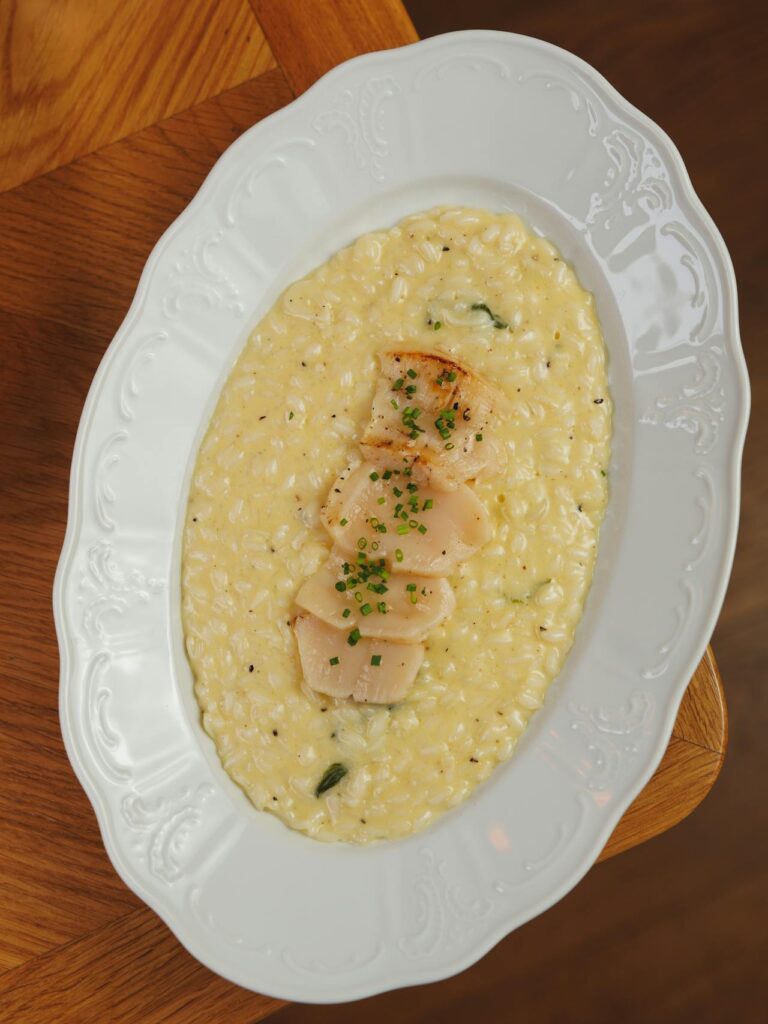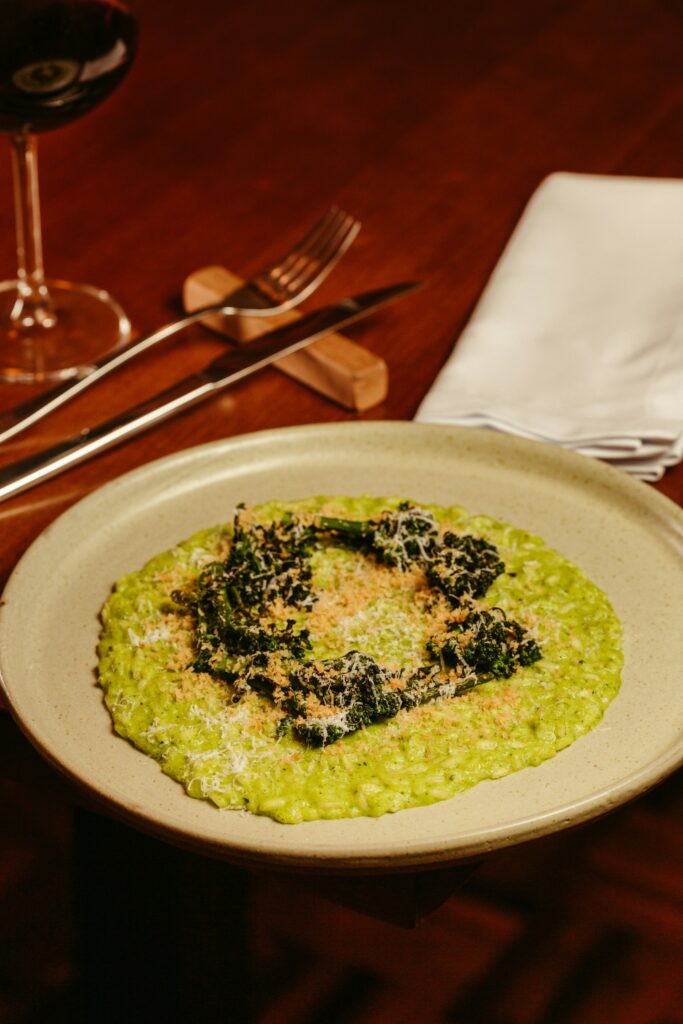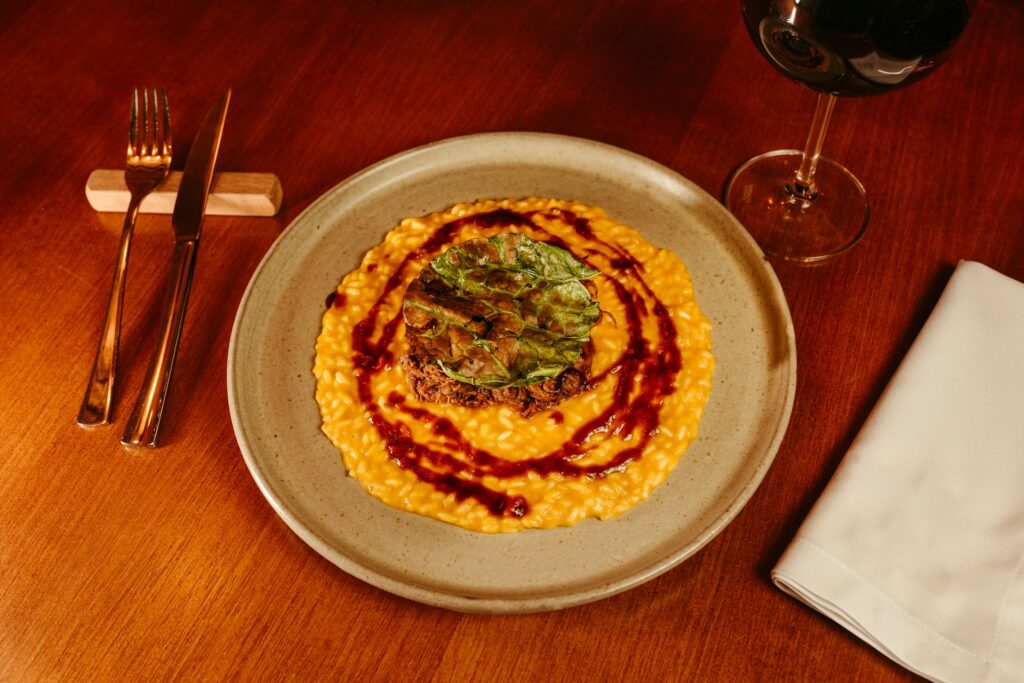Let’s get something out of the way before we begin. To suggest the existence of a ‘right’ way to cook risotto is a dangerous, contentious game to play. Italians with grandmothers may chastise and correct any sweeping claims about relative nuances in technique, with their passports settling the debate before a stove is even ignited.
Nonetheless, there are a few accepted truths regarding the best way to do things, and while this is not ‘case closed’ where risotto is concerned, these steps bring about a pretty delicious finished article. So, here’s how to make risotto in 7 easy steps.
Grains Of Truth
Risotto starts with the choice of rice, and you’ll want a short to medium grain, starchy variety for best results. Try making one with basmati, jasmine or brown rice and you’re going to have an embarrassing mush of weirdness as your reward.
Common wisdom suggests either arborio or carnaroli as the best grain for the job; their starch creating a creamy, unctuous texture if treated with respect. Bomba rice (commonly used for paella) works, at a push.
A Wide, Deep, Pan
Choosing your weapons, part 2. It’s essential you use the right pan, one which has a large surface area and high sides. The former is important as you don’t want rice piled on rice during the cooking process; a single, even coverage is better. The latter is necessary as when you’re beating, you don’t want your risotto making a bid for freedom.


Toast And Deglaze
You asked us how to make risotto in 7 easy steps. Well, now’s the serious part; it’s time to start cooking. Melt a little butter and olive oil over a medium heat and sweat off a diced shallot and halved (bitter green shoot removed) clove of garlic. You don’t want any colour here, just to gently cook.
Next, add your risotto rice and toast it. Although toast is the term, you don’t want deep brown colour, just to bring out the nutty characteristic already present in the grain. Once the requisite aroma fills the air and a gentle colouring is achieved, deglaze the pan with a good glug of something acidic; white wine is most common, but champagne, beer and even vinegar also serve a similar function. Wait for the liquid to evaporate while stirring.
Hot Stock, Added Gradually
A flavoursome stock is crucial to a great risotto, as all the rice will take on the flavour – whether good or bad – of the liquid used. You’ll want your stock nice and hot before you start cooking; if it hits the risotto pan cold, it’ll interrupt the cooking process and take a bit of time to heat back up, throwing things all out of kilter.
Next, when adding your stock to the pan, introduce it gradually (a ladle at a time is good), as you never want the grains to be in a soupy state. They need a little friction to release their starch and fully appreciate into something creamy; swimming will prevent this. Over a medium to high heat, let each ladleful largely disappear into the rice before adding the next.
Read: 10 steps to a perfect, traditional paella

Stir Judicously
The point of deepest dispute. While some ascertain that science can be used to prove constant stirring is completely unnecessary, we’re afraid we just can’t agree. The vast majority of great Italian chefs insist on consistent agitation to elicit the much sought-after texture, and experience has taught us to agree. The whole process should take roughly 17 and a half minutes.
Mantecatura Off The Heat
If the stock is risotto’s backbone, then the mantecatura is it’s beautiful posterior. Meaning to cook until creamy, it rounds everything off, at the end. After adding a final ladle of stock, take your pan off the heat and let it rest for a minute.
Then add diced, cubed butter and parmesan and beat in vigorously until you have a homogenised, lush mass. A little – and just a little – liquid should still be present.
Addition Ingredients
Simplicity is the watchword here, too many ingredients added will disrupt the textural pleasure you’ve worked so hard to achieve. You’ll want anything you add to be cooked already and simply warmed through in the risotto’s residual heat, with fresh herbs sliced and added just before serving to retain maximum freshness.

Common Risotto Mishaps To Avoid
The path to risotto perfection is littered with well-intentioned mistakes. First, using cold stock is a cardinal sin – it disrupts the crucial rhythm of cooking and starch release. Equally egregious is drowning your rice in stock; that “soupy” approach yields gluey results rather than the desired creamy texture.
Many cooks skip the toasting step, missing out on that essential nutty depth. Others, perhaps feeling ambitious, throw in raw vegetables at the end, leaving them crunchy and disrupting the carefully cultivated consistency. And speaking of consistency – abandoning your stirring duties is tempting but fatal to achieving that perfect “wave” texture Italians call all’onda.
Finally, rushing the mantecatura or skipping it entirely is like writing a novel without an ending. Those final moments off the heat, beating in the butter and cheese, transform a good risotto into a magnificent one. Take your time, respect the process, and remember: patience yields perfection.
Now it’s time to sit back and enjoy the fruits of your labours….care to share a bowl?





